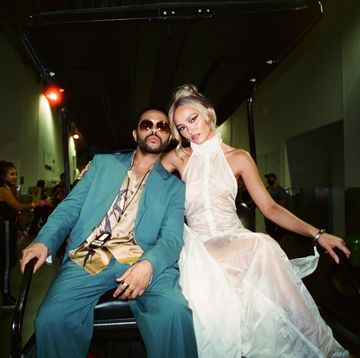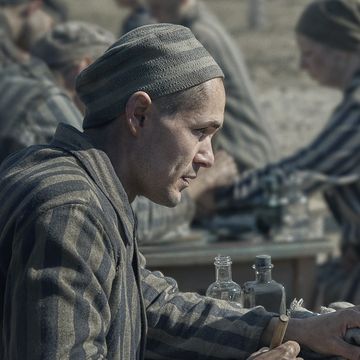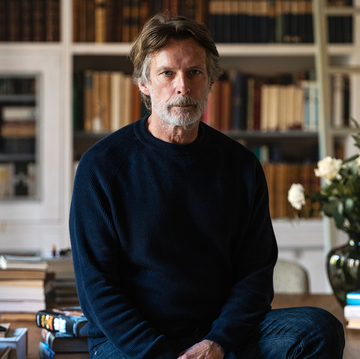Hot on the heels of the surprisingly sweet The Circle, the Netflix algorithm has produced another bingeable reality show. This one is called Love Is Blind, which is hosted by a largely absent real-life celebrity couple – Nick and Vanessa Lachey, who fell in love face-to-face –and brings together a tried and true formula. It's a cross between the anonymity of The Circle and the speedy vows of 90 Day Fiancé. The only prize one can win on the show is a brand new spouse, and in the first episode, Nick explains the theory behind the experiment to the participants: “Psychologists believe that emotional connection is the key to long-term marital success, not physical attraction.” So, they abolish the physical altogether. It sounds like a lofty social experiment, but, dear reader, it most certainly is not.
Love Is Blind begins by dropping 30 young Atlanta singles into an elaborate blind dating facility set for ten days, at the end of which they must either get engaged to a fellow contestant or go home. The men and women live in separate quarters connected by a row of 15 pods, where they begin a rotation of seven-minute speed date sessions to get to know each other. Although they can hear each other speak, the catch is that they can’t see their dates at all – the pods separate the men and women by frosted glass walls that look like they belong in Disney's Frozen. As time goes on, we watch some participants fall in love through the wall, and get very little screen time with those who don’t. But there’s no lack of good juicy reality drama – the player of the season, Barnett, tells three different women that he can see a future with her, which leads to one proposal, one broken heart, and one revenge engagement, at the expense of another man. Six couples (12 of the 30 participants) make it to this stage of the game.
The couples get to meet in person once they are engaged, and after the anonymous Circle-esque portion of the show ends, the novelty of the concept mostly wears off (although the show remains dreadfully watchable). From there, the engaged couples are whisked off to Mexico for a pre-wedding honeymoon in which they begin to cultivate their physical relationships (they already have incredibly strong emotional bonds – you could never understand, having not experienced pod-dating yourself).
Trouble begins early on for some couples in paradise. We watch the woman who ended up with her second choice man after Barnett struggle to connect physically with her new fiancé. One couple calls it quits (with rings thrown into the pool!) before they even make it home. The pairs still standing – or teetering, rather – are soon after flown home to Atlanta to prepare for their weddings, which are to be held in three weeks time. The five remaining couples move in together and face integrating their real lives, student debt and all. It isn’t until they make it to the altar – all dolled up and surrounded by friends, family, and Netflix camera crews – do we find out if they will indeed take the other to be their lawfully wedded spouse. Unsurprisingly, more than one of these weddings end in disaster.
Out of the gate, the question the show sets out to answer – if love is truly blind – feels like a second thought, at no fault of the cast themselves. Where The Circle succeeded in thoughtful casting intended to make a statement on how we perceive others based on looks, Love Is Blind stalls. All the singles chosen to partake in the experiment are conventionally attractive, and so the question – is love blind? – is never really top of mind for the omniscient viewer. With mostly monotonous casting akin to what one might see on The Bachelor or Love Island, the show is more like a high stakes bingo game of hot people.
But it’s these high stakes that make this genre of TV so addictive – often cringey to watch, and still impossible to tear your eyes away from.
A&E’s Married at First Sight is a show in which couples who are paired up by relationship experts agree to marry upon their first meeting. After eight weeks spent living together, the couple then gets to choose whether they want to stay married or get divorced. The show has been a hit for 6 years, and was recently renewed for its tenth and eleventh seasons, which begs the question – why are we, as a culture, obsessed with de-emphasising the physical aspect of a romantic connection? Or do we just love to put love under weird microscopes and watch it squirm?
Married at First Sight has disproved its own theory that love is blind time and time again – 21 out of 29 of its couple subjects have divorced. It’s the messiness and drama of these doomed marriages – these people barely know each other! – that makes them fun to watch. An average happy couple does not make good reality TV. And the numbers show that ‘blinded’ love does not make for an average happy couple – but it certainly does make for some chaotic entertainment.
In the same vein, Love Is Blind says more about how completely absurd it is to marry someone you barely know than it does about the power of a strictly emotional bond. It certainly does prove that dating through a wall does not a pair of soulmates make. But Netflix isn't really in the business of cutesy, boring television – they already knew that.
Episodes 1-9 of Love Is Blind are available to stream on Netflix now, and the wedding finale 27 February
Like this article? Sign up to our newsletter to get more delivered straight to your inbox
Lauren Kranc is the assistant content strategy editor at Esquire, where she runs the brand’s social media accounts and covers pop culture and television, with entirely too narrow an expertise on true crime shows














